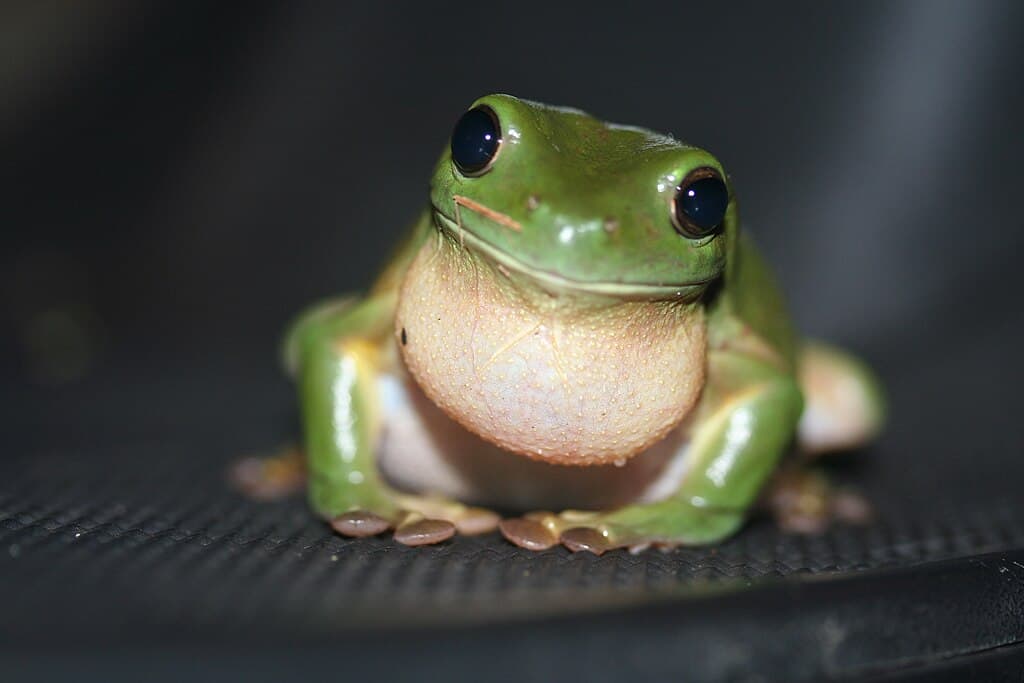Our planet is a sonic landscape, filled with sounds that range from the gentle rustling of leaves to the thunderous roar of oceans. However, not all auditory experiences are meant for human ears. There exists a realm of sounds beyond our audible limits that certain animals can effortlessly perceive. These creatures have evolved to exploit this sensory advantage for survival, communication, or hunting. Let’s journey through this fascinating world and discover 12 animals that can hear sounds humans can’t even imagine.
Bats Masters of Echolocation

Bats are perhaps the most famous example of animals with extraordinary hearing capabilities. They utilize echolocation, emitting ultrasonic calls that bounce off objects, enabling them to navigate and hunt in complete darkness. This sophisticated sonar system allows bats to detect obstacles, prey, and even differentiate between sizes and textures, all through frequencies higher than the human ear can perceive.
Dolphins Underwater Acoustic Experts

Dolphins are renowned for their intelligence and social behavior, but their hearing abilities are equally impressive. They use a form of echolocation to communicate and hunt underwater, producing high-frequency clicks that travel through water. These sounds reflect off objects, helping dolphins construct a mental map of their surroundings. Their ability to hear up to 150 kHz, compared to the human limit of around 20 kHz, facilitates this advanced acoustic communication.
Elephants Low-Frequency Communicators

In contrast to bats and dolphins, elephants excel at hearing low-frequency sounds, known as infrasound. These sounds travel long distances, allowing elephants to communicate across several kilometers. This capability is crucial for coordinating movements within herds or detecting distant thunderstorms. Their ability to sense these vibrations underscores their complex social structures, as infrasound helps maintain contact with dispersed family members.
Owls Nighttime Predators

Owls are equipped with a keen sense of hearing, tailored to their nocturnal lifestyle. They can detect the faintest rustles made by potential prey, even under the cover of night. Their asymmetrical ear placement aids in pinpointing the exact location of sounds, while they can hear frequencies as low as 1 kHz, with a level of sensitivity that allows precise auditory pinpointing.
Dogs Man’s Best Friend with a Sonic Edge

Dogs possess a vastly superior hearing range compared to humans. They can detect frequencies from 40 Hz to as high as 60 kHz, making them adept at picking up subtle sounds well out of the human range. This heightened sensitivity is why dogs often respond to distant or high-pitched noises, and it plays a crucial role in their abilities as protectors, hunters, and trackers.
Cats Silent Hunters

Cats have evolved as stealth predators, equipped with acute hearing to assist them in detecting prey. Their hearing range stretches from about 48 Hz to 85 kHz. This allows cats to hear the ultrasonic communication of rodents, one of their main prey animals, giving them a predatory edge. It’s no wonder that even when a cat seems completely calm, their ears remain perpetually alert.
Moths Echolocation Jammer

Some species of moths have developed the ability to hear ultrasonic frequencies, particularly those emitted by bats. By detecting the echolocation calls of predatory bats, moths can evade capture. This evolutionary arms race showcases how hearing abilities can drive mutual adaptations among predator and prey.
Frogs Vibrational Listeners

Frogs, particularly those active at night, possess an astounding ability to pick up sounds in both aquatic and terrestrial environments. Their tympanic membranes can detect a range of frequencies, aiding in communication during mating seasons. This auditory sensitivity also helps frogs avoid predators and find their way back to breeding ponds.
Whales Oceanic Wayfinders

Whales have adapted to their vast underwater world with remarkable hearing abilities. They use low-frequency sounds to communicate across immense ocean distances. These sounds can travel thousands of kilometers underwater, allowing separated group members to maintain contact. Baleen whales, such as blue whales, are particularly skilled at producing and interpreting these low-frequency vocalizations.
Crickets High-Frequency Chirpers

Crickets might be more renowned for the sounds they produce rather than those they hear. However, they possess the ability to detect high-frequency sounds that play an essential role in their mating rituals. Male crickets produce chirps that are specific to their species, and females use their acute hearing to locate suitable mates—a process integral to their reproductive success.
Rats Persistent Eavesdroppers

Rats have auditory capacities that surpass those of humans, allowing them to hear ultrasonic frequencies crucial for intraspecific communication. Their sensitivity to sound is a vital survival aspect, helping them detect and evade predators. Additionally, the ultrasonic vocalizations of rats are a refined means of conveying distress, mating signals, and social hierarchies.
Barn Owls Precision Hearing

Barn owls are specialized hunters with an acute ability to hear low-frequency sounds emitted by their prey. Their facial disc acts as a parabolic reflector, channeling sound efficiently to their ears. This gives barn owls incredible precision in identifying the location of prey, even under the darkest of conditions.
Conclusion:

These animals showcase nature’s remarkable acoustic adaptations. Hearing plays a crucial role in survival and communication across species, often stretching into frequencies beyond human perception. Understanding these differences not only enriches our appreciation of wildlife but also reminds us of the vast and diverse experiences of life on Earth.
In the grand symphony of life, humans inhabit but a small acoustic niche. Through exploring these remarkable adaptations, we gain insight into the magnificent variety of life’s strategies for navigating and surviving in an intricate world.
- 10 Things That Trigger Komodo Aggression And 3 That Do Not - August 21, 2025
- 10 Record Breaking Animals You Won not Believe Are Real - August 21, 2025
- 12 Most Frequently Adopted Dog Breeds in America - August 21, 2025

